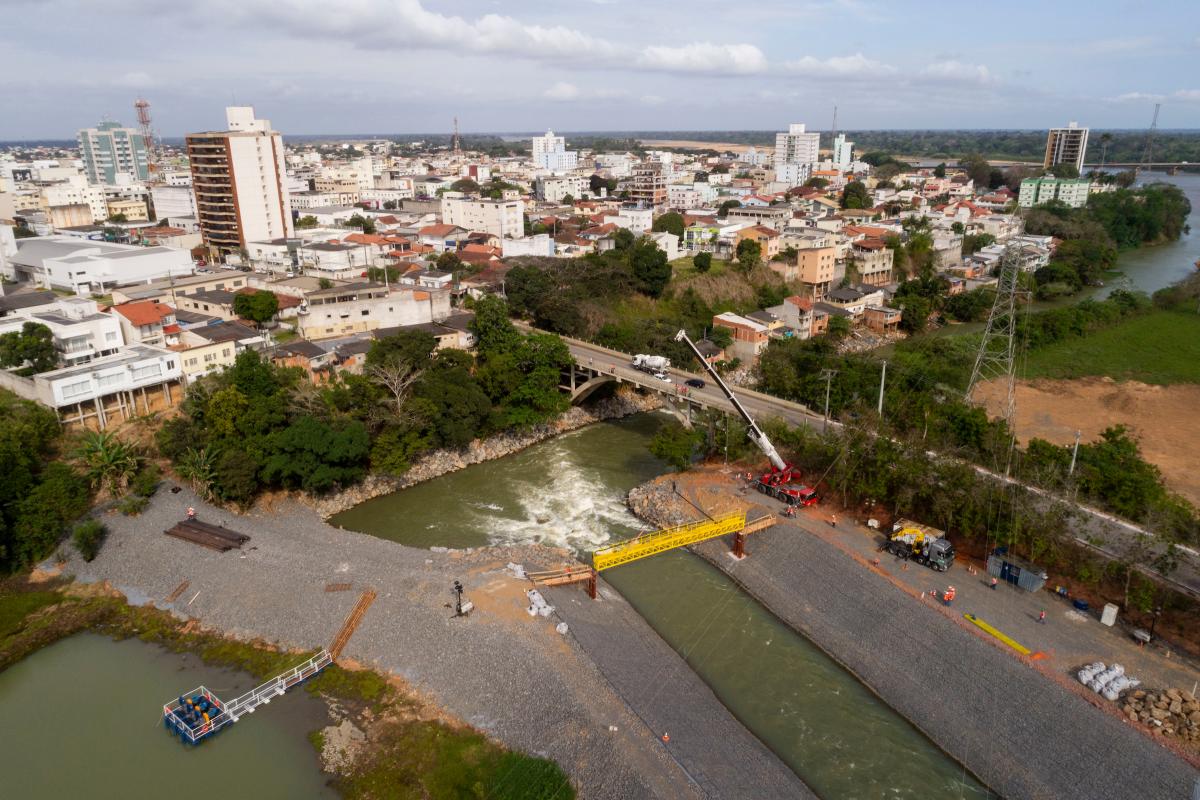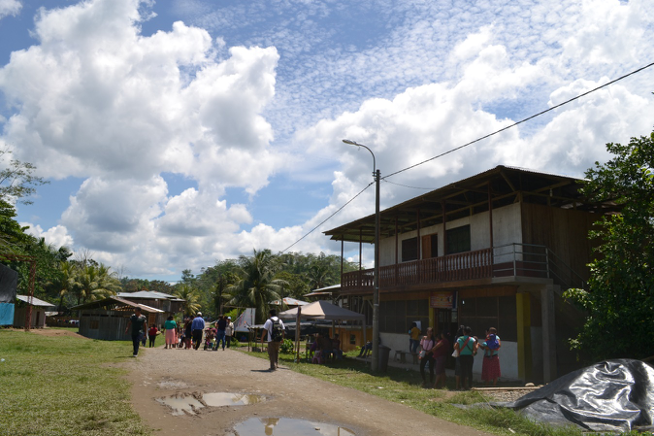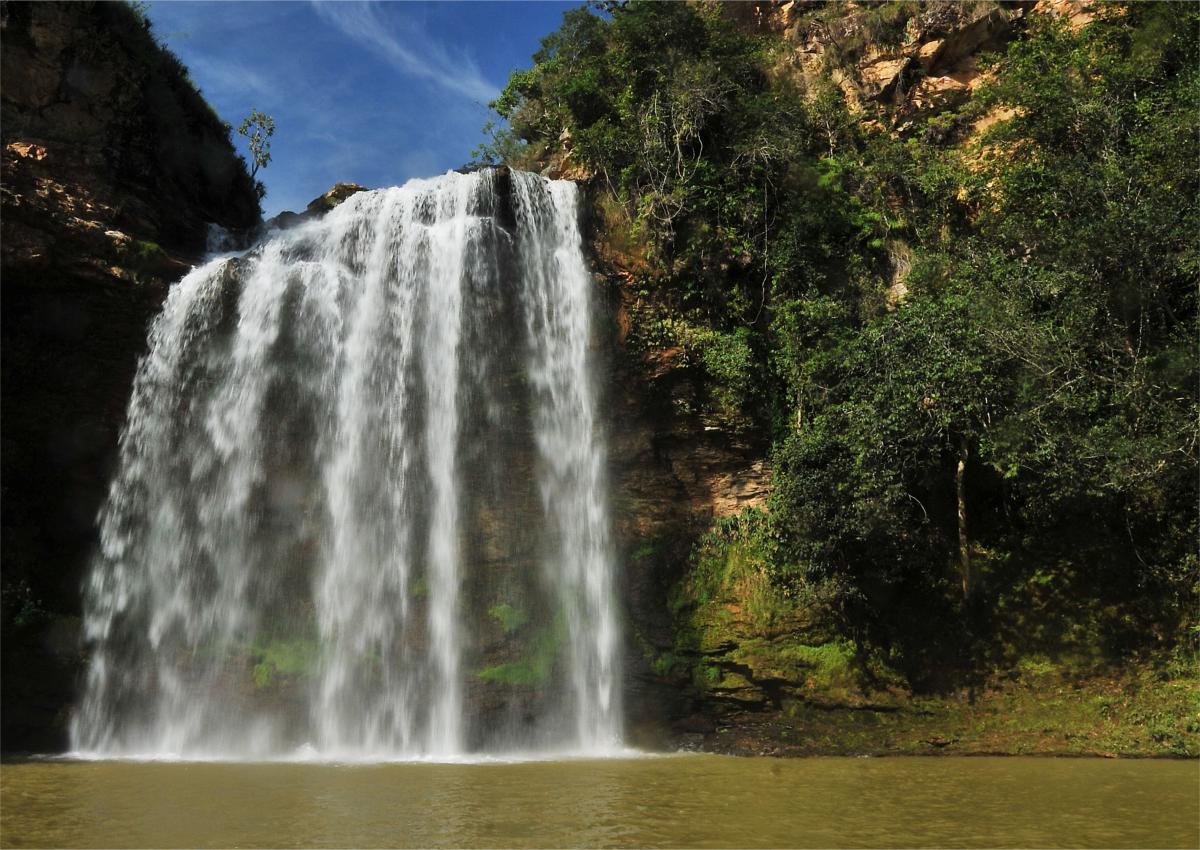Rio Doce Panel experts call for monitoring Lake Juparanã’s environment and water supplies
Belo Horizonte, MG, Brazil, 19 July 2019 (IUCN) – The IUCN-led Rio Doce Panel issued new recommendations today calling on officials to monitor the impacts of a temporary dam on Lake Juparanã and avoid further contamination of local water supplies.

Open water channel between Lake Juparanã and Rio Pequeno. At the bottom, the connection with Rio Doce.
Photo: © IUCN/Rio Doce Panel
Lake Juparanã was temporarily dammed after the 2015 Fundão tailings dam failure, which affected more than 600 miles of the Rio Doce River. However, the barrier -- originally set up to safeguard the lake -- is affecting its natural flow and the overall water quality, which hundreds of thousands of people depend on for freshwater. The lake is the main source of water for three downstream municipalities, Linhares, Sooretama, and Rio Bananal, as well as many smaller villages and districts, such as Pontal do Ouro and Guaxe.
A State Court of Justice decision in 2018 to build a permanent dam with floodgates to control seasonal water flow and supply in the region is being challenged by the mining company Samarco. In the meantime, the disruption of the lake’s natural flow has resulted in occasional flooding in the region has led to the temporary removal of families living on the shores of the Rio Pequeno.
The Rio Doce Panel’s new paper, Risks of suppressing natural flows in a source-to-sea system - The case of Lake Juparanã, Espírito Santo, Brazil, examines the environmental and social risks of maintaining a dam between Lake Juparanã and its connector, the Pequeno River. It urges officials to mitigate impacts resulting from the reduced flow and continuously monitor the overall health of the lake, which is part of a complex lagoon system estimated to be more than 10,000 years old.
A specialist in freshwater ecology and lead author of the paper, Francisco Barbosa, says that the paper confirms that the barrier is having a direct impact on the lake’s aquatic habitats. This can also alter the communities of organisms found there as well as their reproduction cycles, as well as changes of the water quality
Besides, Barbosa points out there are other activities that are threatening the water quality of the lake. "Agriculture run-off and inadequate sanitation systems also dump waste into the lake, increasing the levels of organic matter and aquatic plants, and reducing the amount of oxygen available. These (activities) have severe consequences for the overall health of the lake and the local population,” he said.
The paper examines different scenarios, including the construction of an artificial floodgate system. If a permanent dam is eventually constructed, the Rio Doce Panel says that it will be important to create a management model that supports a “source-to-sea” approach – one that safeguards the exchanges of water, sediments, and organisms to maintain the lake’s pre-existing natural conditions.
Yolanda Kakabadse, chair of the Rio Doce Panel, takes a broader perspective. "The objective is to restore the Rio Doce Basin to a state that is equal to or preferably better than it was in 2015 when the tailings dam disaster occurred. Therefore, it is essential that the natural connections between Lake Juparanã, the Pequeno River and the Rio Doce, in addition to other factors such as the instability of the current dam, are considered in any decision-making process.”
Additional water quality studies recently made available on the Renova Foundation website will be assessed by the Rio Doce Panel and may lead to new recommendations on the issue of the Lake Juparanã dam.
The Rio Doce Panel comprises international and national experts, who bring diverse technical skills, academic qualifications and local knowledge to the table. Among them, the Panel Chair, Ms. Yolanda Kakabadse, is the former Minister of Environment of Ecuador and a former President of IUCN. The lead author is Francisco Antônio R. Barbosa, Ph.D., Full Professor of Freshwater Ecology and Limnology at the Institute of Biological Sciences, Federal University of Minas Gerais, Brazil.
About the Renova Foundation
The Renova Foundation is the entity responsible for the mobilization of the reparation of the damages caused by the collapse of the Fundao dam in Mariana (MG). It’s a non-profit organization, the result of a legal commitment called Transaction and Conduct Adjustment Term (TTAC). It defines the scope of action of the Renova Foundation, which are the 42 programs that unfold in the many projects that are being implemented in the 670 kilometers of the impacted area along the Doce River and its tributaries. The ongoing actions are long-term and expected to take up to 10 years.
Notes to editors
For more information about the Rio Doce Panel, please visit the website.
To view the report, download it here in English or Portuguese.
To set up interviews, please contact:
Renata Bennet, IUCN Business and Biodiversity Programme - Rio Doce Panel - Brazil Country Office
Tel: +55 61 99819 3905, renata.bennet@iucn.org; Web: http://iucn.org



